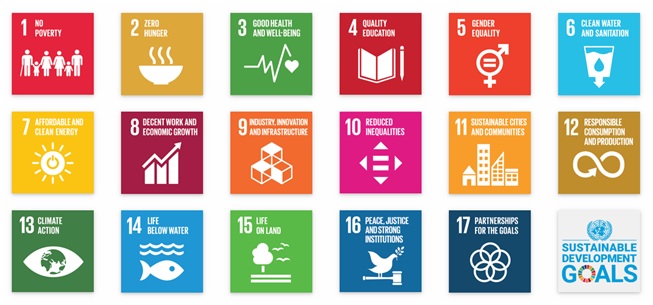The 2030 Agenda for Sustainable Development provides a concreteplan for achieving peace and prosperity for everybody on the earth. The Agenda is framed around 17 Sustainable Development Goals, addressing global challenges concerning poverty, inequality, global climate change, environmental degradation, peace and justice. These goals are interconnected and complementary to one another as the progress on one enhances progress toward the others; and biodiversity is critical to all or any of them.
Biodiversity and ecosystem affect directly the quality of lives of human on earth and development of the human well-being as a whole. Nearly half of the population earns their livelihood directly based on the natural resources and biodiversity in many cases.Biodiversity is also at the focal point of many economic activities, including those related to agriculture, forestry, fisheries and tourism. Hence, consideration of biodiversity and ecosystems will be essential as countries embark on the implementation of the 2030 Agenda and its SDGs, and in the implementation of key national priorities for sustainable development.

Achieving sustainable development
The effect of human led land use change, over-exploitation, production of greenhouse gases and consequently global climate change, pollution, and therefore the spread of non-native species–is evident.
Every year around 13 million hectares of forest area; and desertification has occurred across 3.6 billion hectares of land. Approximately 8% of all known animal speciesare extinct and 22 % are in danger of extinction. Meanwhile, pollution has deteriorated coastal waters; and lots of fish species are being rapidly depleted. Human activities have also contributed to conditions during which viruses can more easily be transmitted between animals and humans, leading to infectious diseases; similar to the one which we are facing now.
According to a report published by MoEF&CC, irreversible declines within the natural environment present a serious threat to the last 20 years of progress toward the Sustainable Development Goals. A much more optimistic future remains attainable, but only with drastic change to development policies, incentives and actions.
It’s time for Nature
With 10 years left to realize the 2030 Agenda for Sustainable Development, and as we enter the last decade of Action to deliver the worldwide Goals, 2020 may be a crucial year. UNEP and its partners will lead a Decade on Ecosystems Restoration; and key international meetings, such the Conference of the Parties to the UN Convention on Biological Diversity, will chart the course for global action.
Reversing biodiversity loss is that the only wayto restore and sustain a healthy planet–and the lives that it supports. It’s time to reimaging our relationship with nature and put nature at the guts of our decision-making. The time is ticking away every second and restoring biological ecosystems will need more time than is on deck.